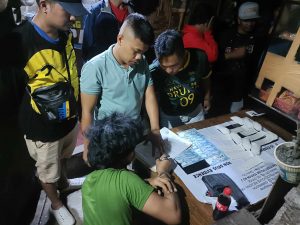A group has blamed poverty as among the factors that continue to drive children into forced labor.
Amplifying the 17th World Day Agaisnt Child Labour Campaign theme: “Children should not work in the fields, but on their dreams” yesterday, Florie May Tacang, Kaugmaon Foundation executive director, said that in Mindanao children are forced to work in the informal sectors such as fishing, construction, scavenging, vending, domestic work, and cemetery labor
Tacang said according to the most recent data available by the Philippine Statistics Authority, there are 114,000 child laborers in the region.
“I know of some children who work in the cemetery through cleaning gravestone. They also sleep in the cemetery because they have no other place to go to,” Jed Lagria, peer educator and a member of Child Advisory Committee of the Time to Talk Campaign, said.
The number is expected to grow because of poverty, culture, and limited social services afforded to children and their parents, they explained.
“Child labor is socio-economic issue. In our culture, children working in the fields have been perceived as a training ground for them but in the present times, we must understand that children must be in schools studying,” Tacang said.
These children who are into child labor are exposed to poor health conditions, vulnerable to being abused, prone to drop out from school, and may even be engage to prostitution, drug couriering, and trafficking.
Tacang also noted that child labor may probably lead a child into becoming a children in conflict with the law.
The group also called for more available scholarships in all educational levels especially that the addition of two years to the basic curriculum proved to be an added burden to most impoverished families.
“We have talked to families who said they can support until Junior High School but could no longer provide for Senior High School,” Tacang said.
This initiative is taken by the Child Advisory Committee of the Time to Talk Campaign through lobbying scholarships to help child laborers.
“We have children under Kaugmaon who were able to finish tertiary education after receiving support from businessmen, and other private sectors,” she said.
The group, a non-government organization, also called for livelihood project for parents, inclusion of child labor in the development plan, and awareness raising activities for the community.
Kaugmaon also addressed child labor issues outside the city with projects in Pantukan, Compostela Valley in partnership with Voice-Philippines, and some areas in Davao del Norte in partnership with the ChildFund Philippines through the Building Capacity, Awareness and Advocacy and Programs (BuildCA2P), and Self Help Approach in Addresing Child Labor in the ground in partnership with Kindernothilfe- Phillippines.




